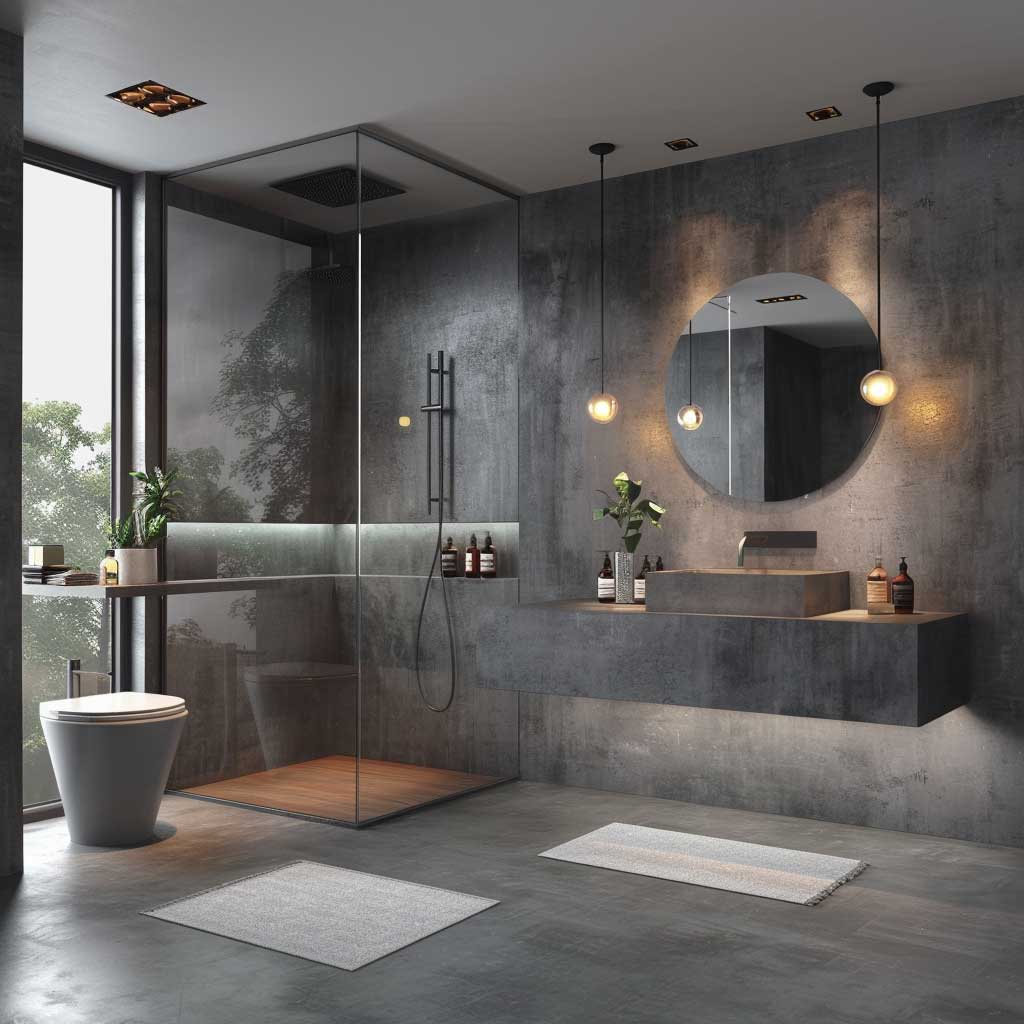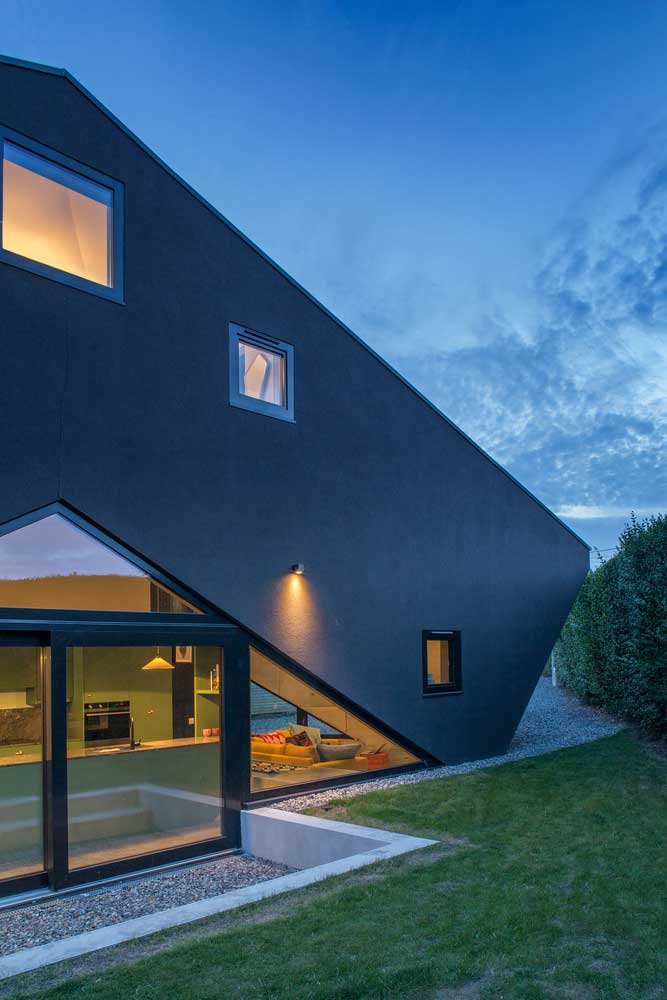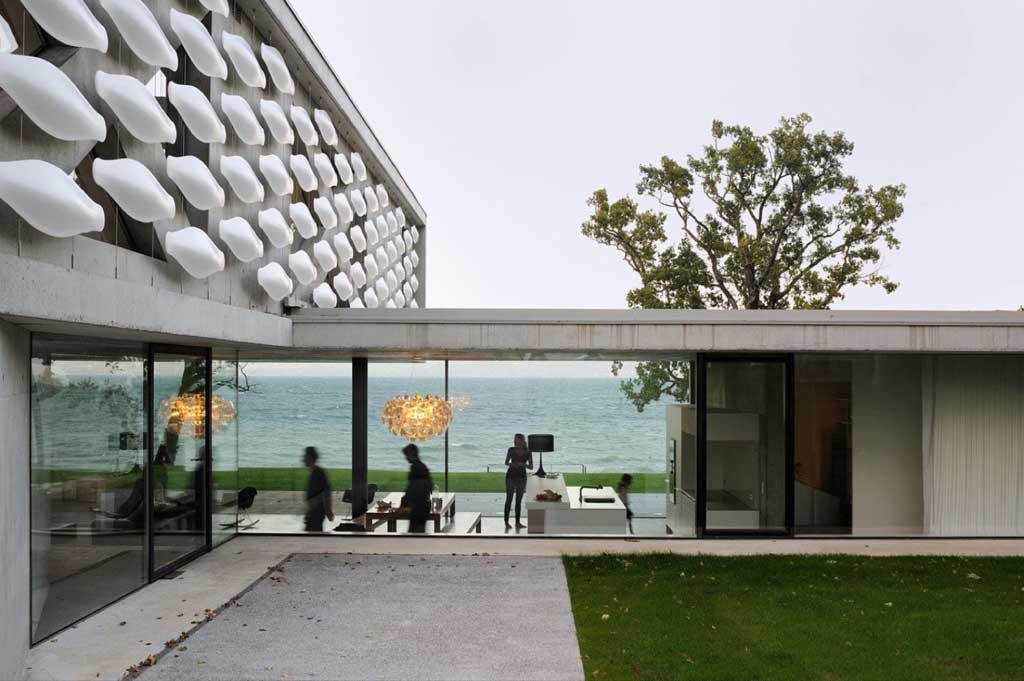In the heart of Leiria, a structure stands tall, not just as a testament to architectural prowess but as a beacon of sustainable and innovative design. The use of concrete, often perceived as cold and industrial, has been transformed into a work of art. This structure, with its horizontal concrete rings, serves a dual purpose: a stunning visual appeal and a functional solar filter.






| Architects | CONTAMINAR arquitetos |
| Images | http://ultimasreportagens.com/ |
Concrete: The Backbone of Modern Architecture
Concrete, once relegated to the unseen foundations of buildings, has risen to prominence in modern design. Its malleability allows for a myriad of shapes and forms, making it a versatile choice for architects.
In recent years, the aesthetic appeal of concrete has been recognized. Its raw, unfinished look provides a contrast to the polished surfaces we’re accustomed to, offering a touch of industrial chic to urban landscapes.
Beyond its visual appeal, concrete’s durability ensures that structures stand the test of time. It resists weathering, providing a steadfast shield against the elements.
The thermal properties of concrete also play a pivotal role. Its ability to retain heat makes it an energy-efficient choice, reducing the need for artificial heating in colder months.
In Leiria, the innovative use of concrete showcases its potential not just as a building material but as an artistic medium. The structure stands as a testament to the limitless possibilities of concrete in architecture.




Rings: More Than Just Aesthetic Appeal
The horizontal rings that wrap around the building are a masterstroke of design. They serve as a visual spectacle, drawing eyes and evoking admiration from passersby.
But these rings are not just for show. They have a functional purpose, acting as solar filters. By casting shadows, they regulate the amount of sunlight that penetrates the building, reducing the need for artificial cooling.
The rhythmic pattern of the rings creates a dynamic play of light and shadow. This interplay transforms throughout the day, giving the building a life of its own.
The design also ensures privacy. While allowing ample light to filter through, the rings shield the interiors from prying eyes, creating a sanctuary for its inhabitants.
The rings, with their dual purpose, exemplify the perfect marriage of form and function. They stand as a testament to the architect’s vision and the transformative power of design.




The Dance of Light and Shadow
One of the most captivating aspects of the building is the dance of light and shadow. As the sun traverses the sky, the concrete rings cast ever-changing patterns, creating a dynamic visual display that evolves throughout the day.
This interplay is not just a visual treat but also a testament to the meticulous planning and design precision. The placement and spacing of the rings have been calculated to maximize the play of light, ensuring that no two moments are the same.
The dance of light and shadow also has a profound impact on the interior ambiance. The changing patterns create a soothing rhythm, adding a touch of nature’s cadence to the urban setting.
For the inhabitants, this dynamic light play offers a unique experience. Every room becomes a canvas where light paints different scenes, making each day distinct and memorable.
Moreover, this dance is not just limited to sunny days. Even on cloudy days or when it rains, the rings create mesmerizing patterns, turning the mundane into the magical.



Sustainability: A Core Principle
The use of concrete rings as solar filters underscores a deeper commitment to sustainability. By regulating sunlight, the building reduces its reliance on artificial cooling, leading to significant energy savings.
The thermal mass of concrete further enhances the building’s energy efficiency. By absorbing heat during the day and releasing it at night, it helps maintain a consistent interior temperature, reducing the need for heating or cooling.
Water runoff, often a concern with concrete structures, is addressed with innovative drainage solutions. This ensures that the building not only looks good but also respects its environment.
The choice of local materials and construction techniques further reduces the building’s carbon footprint. Every element, from the concrete mix to the finishing touches, has been chosen with sustainability in mind.
In an era where climate change is a pressing concern, such architectural innovations offer a glimpse of a sustainable future. They show that with creativity and commitment, we can build structures that are not only beautiful but also eco-friendly.

The building in Leiria is not just an architectural marvel; it’s a beacon of hope. It showcases how innovative design, when combined with a commitment to sustainability, can create structures that inspire and make a difference. In its concrete rings and the dance of light and shadow, we see the future of architecture – one that is harmonious, sustainable, and profoundly impactful.






